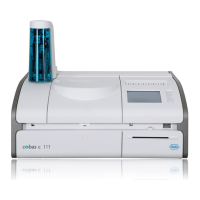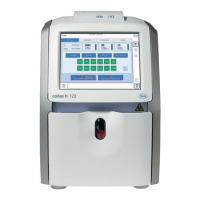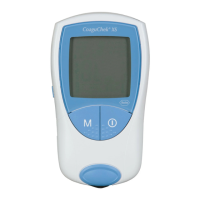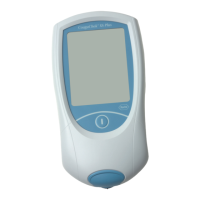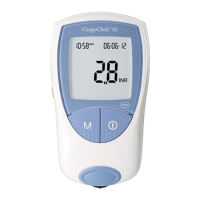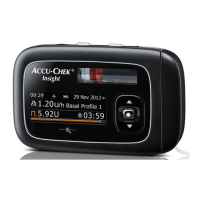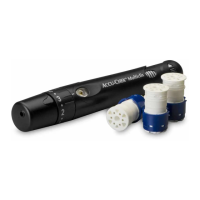66 About lockouts
Roche Diagnostics
cobas
®
pulse · Software version 01.03 · User Assistance · Publication version 1.0
About lockouts
In this section
About the QC lockout(66)
Lockout types(68)
About the QC lockout
A QC lockout on an instrument occurs when a QC test is
due. It is probably the most common type of lockout. You
remove a QC lockout by performing QC tests.
QC lockout is indicated on the charging screen and on
the Glucose screen.
On the Tests screen QC lockout is indicated on a test
button by a symbol on its top right corner.
You cannot make measurements on the instrument until
the lockout has been removed. You remove a QC lockout
by performing and passing a QC test. Depending on the
QC lockout configuration, this can be at QC level 1 or 2,
or level 1 and 2.
i
If your instrument is configured to allow you to
override a QC lockout, you can perform a test
despite a QC lockout, when the QC lockout was
the result of a QC algorithm configuration
condition.
Your instrument can be configured to allow you
to override a QC lockout up to 9 times before you
must perform a QC test.
However, if the QC lockout was the result of a
failed QC test, the QC lockout cannot be
overridden.
A QC lockout is triggered by the following;
• By fulfilling a QC algorithm configuration condition
• A failed QC test
• After certain software updates
The QC algorithm is configured on the instrument
through the DMS, or by using a QR code. The following
configurations are possible:
• QC disabled
2 Overview of the system
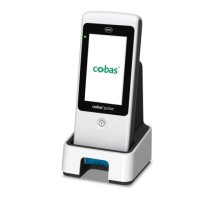
